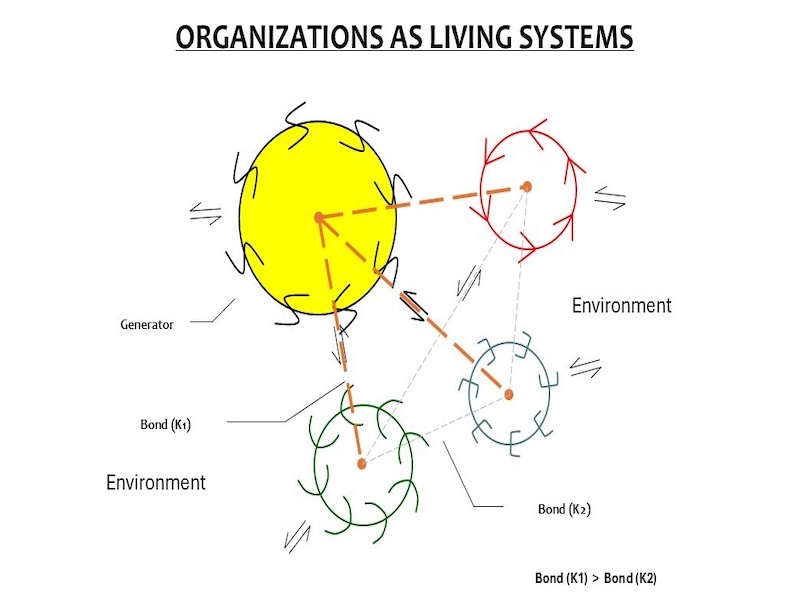Organizations as Living Systems
Understanding organizations as living systems challenges the traditional, mechanistic views of management and enables a more human-centered, adaptive approach. It empowers leaders and teams to thrive in uncertainty while nurturing sustainable growth and innovation.
When organizations are perceived as living systems with fluid boundaries rather than contractual entities, they shift from being a controlled, transactional entity to an emergent, coevolutionary phenomenon. Instead of treating their offers – services – as a commodity to be transferred, living systems generate and evolve offers dynamically through interactions, relationships, and environmental adaptation. That change will help organizations to produce unique offers and lead their industries.
Living Systems rely on their social fabric that constitutes the ecosystem they live within. Social fabric is a concept that describes the network of relationships, institutions, norms, and values that bind a group of people together. It encompasses the shared cultural, economic, and social structures that enable individuals and groups to interact, collaborate, and coexist.
Social fabric is an autopoietic system—one that self-organizes, dissolves, and re-forms in an evolutionary way—suggests that disruptions are not mere breaks but catalysts for regeneration and transformation. This means that rather than fearing instability, organizations should embrace disruptions as opportunities for new forms of connectivity and offer creation.
This perspective reframes how individuals and organizations should view their existence, not as isolated entities evolving independently, but as coevolving participants within an interdependent social fabric. The idea that boundaries are fluid and permeable aligns with the reality that no person or organization can thrive in isolation; they must constantly adapt through interaction.
Should we treat Organizations as Living Systems?
